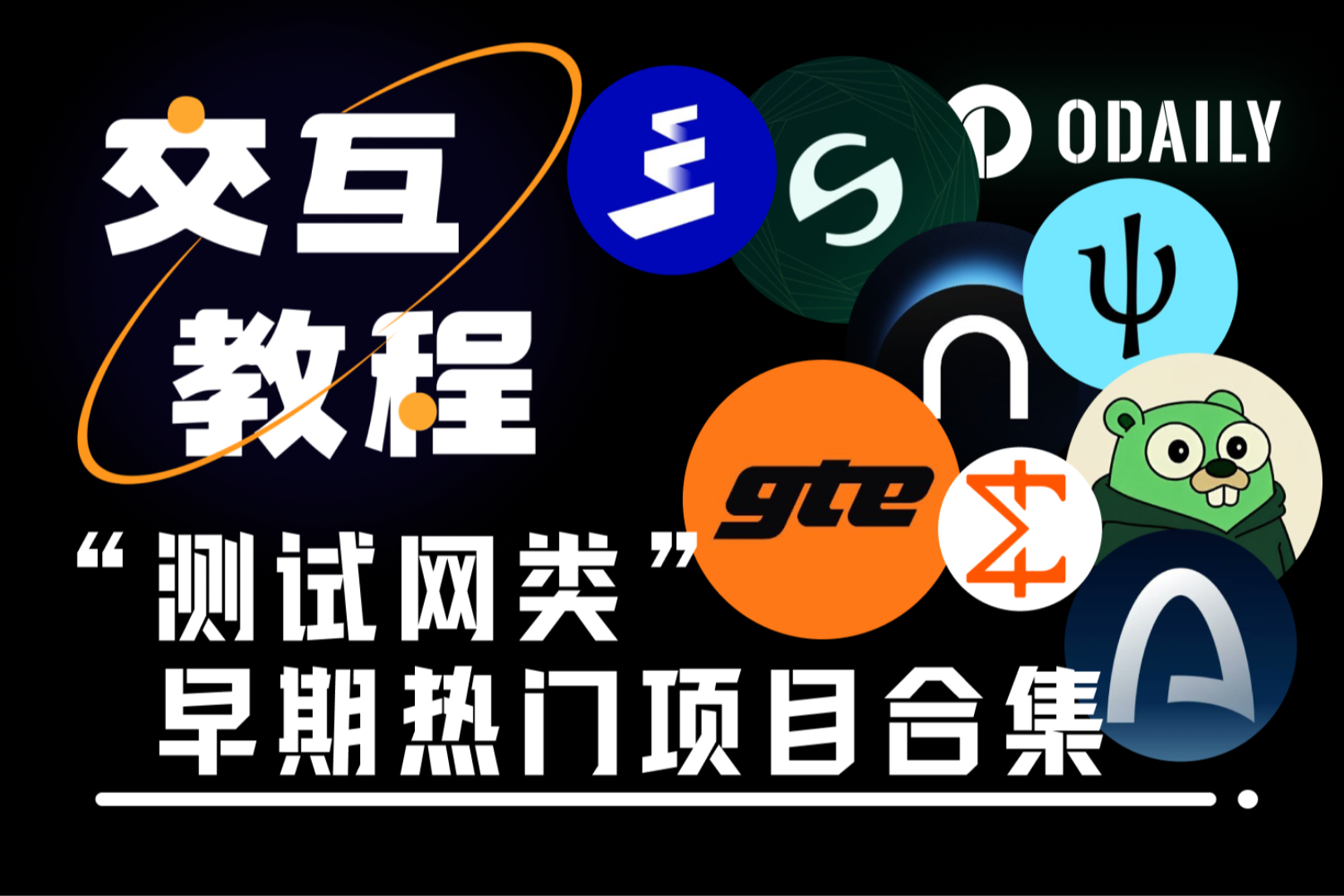The "ultimate indicator" of the potential of public chains? The competition between Solana and Ethereum from the perspective of REV
Original title: How to Backfill a Narrative on Solana, Ethereum, Memecoins, and REV
Original author: Brendan Farmer, Polygon co-founder
Original translation: Ashley, BlockBeats
Editor's note: The article criticizes Solana's value narrative, arguing that its short-term wealth effect that relies on Meme coin transactions is not sustainable and has structural risks. Solana's success may be more due to speculation rather than technical advantages, while Ethereum is still developing steadily in the DeFi field. The author reminds readers to always think critically about the narrative in the crypto field and avoid being misled by the market craze.
The following is the original content (for easier reading and understanding, the original content has been reorganized):
The task of thought leaders in the crypto space is to tell stories that explain why certain coins go up or down in value. The curves that go up and down on a chart are never just lines, but part of a larger technological or economic trend. These "filler narratives" may be compelling (such as "digital gold" and "the world computer") or less so (such as "Play-to-Earn is the future of work"), but it is important to critically examine how each narrative constructs the world - and who benefits from this construction.
Blue collar, venture capitalist folks in narrative factories have been working overtime to explain why ETH has underperformed compared to BTC and SOL. Some of these arguments are not controversial: the Ethereum community should achieve better agreement on a shared direction, re-evaluate its technical assumptions, or simply do better.
This article argues that a particular narrative about Solana and Ethereum is wrong. The story goes something like this: Solana dominates Ethereum in the most important economic metrics for blockchains, specifically decentralized exchange (DEX) volume and REV (Real Economic Value = MEV + transaction fees, a measure of the protocol’s cash flow).
According to this story, Solana’s lead in REV stems from technological advantages and traction in multiple application categories. The value of SOL can be assessed based on future projected REV, which is an advantage over ETH, because ETH can only be valued based on “atmosphere” or “monetaryness”.
But this is just a narrative. Solana’s REV is generated entirely by Meme coin transactions, which makes it difficult to value SOL based on future cash flows. Moreover, the dominance of Meme coins creates structural risks for Solana.
Tracking REV
Over the past year and a half, the SOL/ETH ratio has increased by about 10x. Whenever we see similar price action, we know it’s time to fill in a new narrative.
We can tell a story like this: Solana has more advanced technology, users love it, and the best developers of all kinds - including DePIN, DeFi, payments, and of course Meme coins - are turning to Solana.

VCs will argue that this massive migration of talent has resulted in massive growth in the most important metrics like REV, transaction volume, and app revenue. The story goes that SOL doesn’t need to be a currency or commodity like ETH because its market cap will ultimately be justified by a reasonable multiple of actual revenue, not some meme culture nonsense.
If you want to see how Solana performs, the data proves it.

It’s a great narrative.
But for the sake of argument, let’s look at where REV actually came from.
Probably a great combination of all the best crypto applications. Groundbreaking DePINs like Helium, a CLOB that is building a decentralized Nasdaq, stablecoin payment volume, complex DeFi transactions, and of course, probably a portion from Meme Coins, right?

Wait — These are just pump.fun and a bunch of Telegram bots for Meme Coin trading?
Where are the groundbreaking applications? Where is DePIN? Where is the global price discovery of events happening in Singapore or London? Where are the top, IMO award-winning developers?
Are we increasing bandwidth and reducing latency for Bots trading $BUTTHOLE?!
Building a decentralized casino
This post is not about whether Meme coins are good or bad. Meme coins may be a good way to onboard users to crypto protocols and transfer wealth from “ignorant market participants” to skilled liquidity providers.
But Solana’s REV comes entirely from Meme coin transactions, which creates structural problems for evaluating the value of SOL based on future REV.
Let’s fill in our own narrative. SOL was oversold after the FTX explosion, but Solana can still present a compelling story to institutional capital allocators. It has a pragmatic roadmap for scaling and is culturally understandable to investors familiar with Silicon Valley tech startups.
As the marketing of SOL was successful, the price went up. This created a wealth effect, which is a wonderful thing in crypto. It was a kind of financial alchemy where token price increases (which were largely unrelated to the technology) translated into on-chain activity (which appeared to be driven by more advanced technology).
You can think of the wealth effect as a pressure cooker full of money, heating up, and the only way the pressure is released is for capital to flow into dumber and riskier assets, like CryptoDickButts or this:

As activity increases, thought leaders can fill in a compelling narrative, driving the SOL price up and creating more activity. Applications release tokens, injecting more capital into the system (ex: Jito effectively airdropped a new car to everyone in Solana DeFi). We can call this a flywheel effect.
According to our narrative, the reason why Meme coin activity exploded on Solana (and not other equally scalable L1 or L2) is primarily because of the wealth effect of SOL. Solana’s cheap transaction fees are a necessary prerequisite, but the wealth effect is needed to allow the Meme coin craze to grow to its current scale.

Time is a circle

This has all happened before. If we look back at 2020-2021, we see incredible growth in REV on Ethereum. During the last bull run, new wealth from ETH holders flowed into increasingly volatile on-chain assets like NFTs and Meme coins.
Highly speculative assets tend to over-generate REV because users are willing to pay higher priority fees and MEV rates for exposure to volatility. The value of a Meme Coin transaction is highly dependent on its position in a block, so block proposers who control the ordering can capture more value. This brings higher commissions to the protocol than other forms of on-chain activity.
However, we can see that the highly speculative activity on Ethereum (in terms of NFTs and Meme coins) disappears as the market cycles change. Using Ethereum's REV in 2021 as a basis for estimating future REV is fundamentally wrong.

Meme Coin REV Won’t Last (And Won’t Save You)
Just like REV generated by Meme coins on Ethereum is not sustainable, it will not be sustainable on Solana. While Meme coins may be fun, Meme coin speculation is a zero-sum game.
The fees and MEV paid by Meme Coin gamblers are extremely high relative to other forms of gambling, and eventually gamblers will run out of money. High fees and MEV may be good for increasing REV, but in a zero-sum game, this does not create any economic value, and the consequence is that they drain liquidity from the ecosystem. Every dollar of REV paid means less money for future Meme Coin transactions, and less future REV.

Therefore, it is difficult to argue that REV's growth will continue and ultimately justify SOL's market cap.
The ratio of SOL's FDV (roughly $150B) to 2024 REV ($1.4B) is about 100:1 . If we are generous and annualize Q4 REV ($825M), we get a ratio of 45:1. While an improvement, this still assumes that meme coin trading volume will grow over time. Given that this is unlikely (see ETH's REV falling from $10B to $2.6B in the last market cycle), it is difficult to justify SOL's valuation through expected future REV.
A popular rebuttal is that Solana will simply expand its blockspace 10x or 100x and REV will scale in proportion.
The problem is that even if Solana could increase throughput 100x, it would be hard to find 100x more innocent order flow willing to be “extracted” — buying up Meme coins via sandwich attacks and snipers, except in Ken Griffin’s most perverted fantasies?
In order for Meme Coin trading volume to continue to grow and compress SOL's P/E ratio, we need the price of SOL to rise to enhance the wealth effect. But this defeats the purpose; we are trying to compress the P/E ratio, not expand or maintain it.
Other applications such as DeFi, DePIN, and payment applications will not generate the same amount of REV per unit of block space. For example, a complex trader lending blue chip assets to earn 10%, or a player playing a game, may consume the same amount of block space, but generate much less REV than a Meme coin transaction.
"Mercenary" Memecoin
Memecoin’s transaction volume also tends to move to the new chain as the wealth effect of the new tokens increases.
You might think that the reason Memecoin’s issuance was moved from Ethereum to Solana is that Solana is more scalable and better suited for trading, and that Solana’s technological superiority means it will continue to be a hotbed of depraved gambling. This isn’t the so-called “decentralized Nasdaq,” but as a hub of wild speculation, it’s at least worth something.
This ignores that the direct cause of the Memecoin craze was the SOL wealth effect. For example, BONK’s price and volume followed SOL’s footsteps in late 2023. We can see that the same applies to decentralized exchange (DEX) volume, especially Memecoin’s volume, which did not explode until March 2024, after SOL rebounded 10x from its post-FTX crash lows.
As new chains are launched, especially high-performance L2s like MegaETH and Rise, these chains may provide better venues for Memecoin traders to trade. These chains will launch with new tokens and new wealth.
They may not be decentralized, nor will they synchronize global information at the speed of light, but people trading $FARTCOIN don’t care — the risk they take on gambling on Memecoin far outweighs any risk of decentralization. L2 offers lower latency, better performance, and a higher transaction success rate, which is a better trade-off.
What about Ethereum?
The narrative about REV growth on Solana is also used to advocate for change to Ethereum. The implicit argument is that Ethereum must scale to regain lost activity (and REV). This doesn’t make sense given that Solana’s activity is driven entirely by Memecoin. Scaling L1 execution 5x or 10x will not bring Memecoin back to Ethereum L1; Solana still has lower fees and a stronger short-term wealth effect.
If DeFi as a whole had migrated to Solana, we should have seen a significant drop in Ethereum volume. However, Ethereum's DEX volume in December 2023 remained between 10%-20% of its historical monthly high volume, and even during the bull run in 2021/22, ETH price volatility was greater and NFT and Memecoin volumes were much higher than they are now.
This supports the idea that there are different categories of DeFi users. While Memecoin traders are increasingly flocking to Solana, a large amount of funds remain on Ethereum. Citing REV or DEX trading volume as evidence of Solana’s dominance in DeFi is misleading.
If we use DeFi TVL as a measure of the type of activity per network, we can see that Ethereum has 6x the TVL of Solana (despite ETH price weakness), which suggests that activity on Ethereum is qualitatively different than activity on Solana. Memecoin is pretty much useless from a DeFi perspective; by the way, what are the collateral requirements for $BUTTHOLE loans?
The counterargument is that almost all on-chain activity is purely speculative, so it’s somewhat hypocritical to view Solana’s activity as just Memecoin transactions when Ethereum’s activity is not tied to real economic activity. My first reaction is to suggest that for the good of the industry, stop making this kind of talk.
On a more serious note, while Solana leads in REV, Ethereum clearly has a more mature and vibrant DeFi ecosystem, as it still shows strong TVL and activity even without a large Memecoin issuance.
Rollup-centric roadmap strikes back
We have argued that the value of SOL cannot be proven by the expected future REV. Currently, SOL is still competing with BTC and ETH to become the first link in the capital flow of crypto assets.
But Memecoin presents another structural challenge for Solana’s long-term viability, as Memecoin traders are better suited for L2 transactions.
L2s are able to operate at high throughput with extremely low latency. They respond faster to issues and outages without the coordination overhead of decentralization. They can more easily filter out junk transactions.
You might think that Solana’s high-performance client is a lasting advantage, but open source technology always loves to be commoditized. Ironically, when venture capitalists cite Solana’s technical advantages over Ethereum, teams like Eclipse and Atlas have already deployed SVM L2 on Ethereum.

Ethereum’s liquidity and TVL make it a better platform for L2. In addition, Ethereum explicitly makes a trade-off between performance and availability, which is a better choice for L2 because L2 does not require high throughput on L1. The most feared situation for L2 is that when L1 is offline, transactions or bridges cannot be completed.
This creates real risk for Solana, as its REV growth is driven entirely by highly cyclical activity that could be better served by other chains.
in conclusion
The optimistic scenario for Solana is that it is now in the same position that Ethereum was in 2021, and that, ultimately, the activity will lead to a more mature DeFi ecosystem. But that’s no guarantee.
DeFi activity on Ethereum is dominated by whales who don’t care about fees and are more concerned with decentralization, usability, and security. One can imagine a world where retail users trade Memecoin on Unichain, while whales trade UNI on Ethereum. L2 can provide a better environment for Memecoin and long-tail crypto assets, while Ethereum provides a better environment for whales because it prioritizes liveness over performance.
The pessimistic case for Solana is that it has not really succeeded in following its North Star of building a decentralized Nasdaq. Traders care about latency and guaranteed execution of trades. During volatility, it is difficult to include trades on Solana, and latency is not competitive with (more centralized) L2s.
More precisely, Solana is successfully building a decentralized “casino”, a venue designed to maximize volatility and risk exposure for traders who are flush with cash through short-term wealth effects.
This could turn into a new form of gambling when the Memecoin craze ends, but that’s unlikely to happen because gamblers don’t care about Solana’s advantages over L2, but more about (centralized) L2’s advantages over Solana.
But back to the point. In crypto, it’s very easy to fill a narrative that supports a particular viewpoint (and heavy position). This is especially easy when your story involves compelling technology and activity driven by speculative enthusiasm. But because of this, we should be skeptical of stories that are clearly biased in favor of the person telling the story.
I think Ethereum is actually doing itself a disservice by embracing its critics’ arguments. This includes the story around REV and comparisons to Solana’s economic metrics, but more importantly, the debate around value accumulation and L2 being parasitic on Ethereum’s L1. Hopefully I’ll discuss this in a future post.
Note: This post has been sitting in the draft box for a few months, so it does not include $TRUMP, $MELANIA, or the recent market sell-off. These do not materially impact the argument, so they are not mentioned.



